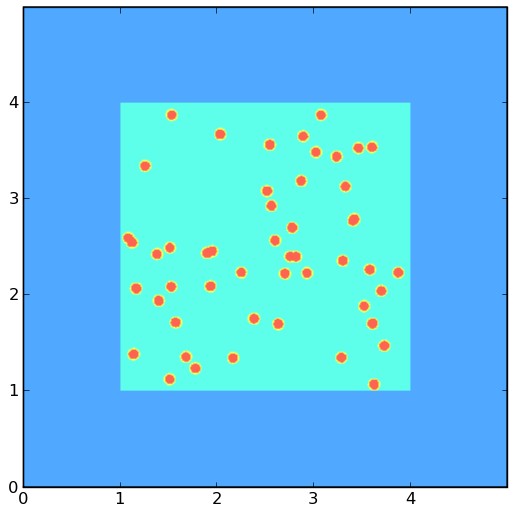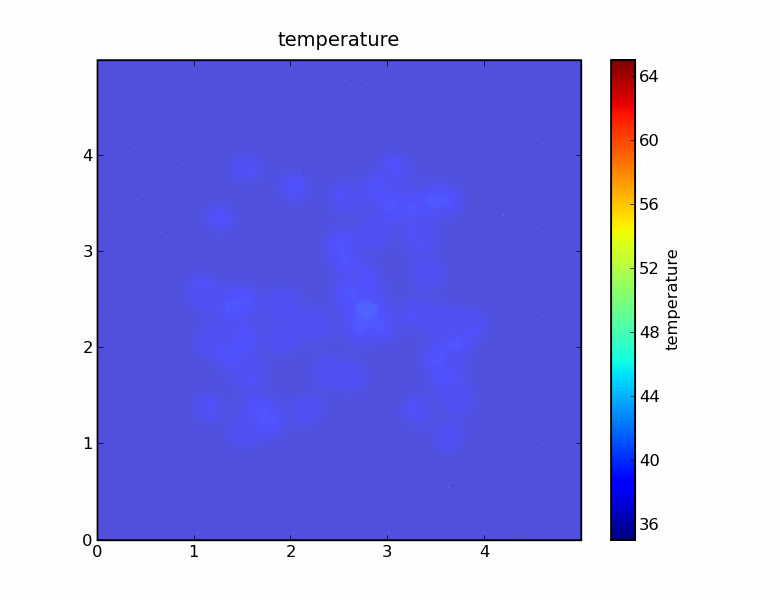

Simulating hyperthermia induction via optically-active nanoparticlesEdwin R. Fuller, Jr.Optical activation of gold-nanoshell, dielectric-core nanoparticles with laser radiation in the near-infrared spectrum provides a means to induce hyperthermia in a tumor, while leaving the surrounding healthy tissue intact. However, "the density and distribution of nanoparticles within the tumor will also determine to what extent laser light is absorbed in a specific path and, thus, what temperatures can be reached." [M. Everts, Expert Review of Medical Devices, 4 [2]: 131-136 (2007).] Moreover, energy transfer to the surrounding tissue may be influenced by nanoparticle agglomeration and defects in the gold nanoshell. While much research is underway to elucidate the interaction of laser radiation with gold-coated nanoparticles and the use of this interaction for the thermal ablation of tumors, little has been done to understand the influence of the distribution of nanoparticles (e.g., particle agglomeration), and of defects in the gold shells (e.g., holes in the gold coating) on the local heat transfer, and the effective ensemble properties. The research here seeks to elucidate the influence of particle agglomeration and nanoshell defects on the local heat transfer behavior of laser-heated, gold nanoshell particles, thereby providing a means of determining effective system properties and responses of nanoparticle ensembles. The approach is to develop simulation models of gold-coated nanoparticles for mesoscopic simulations of the induction of local hyperthermia. The models will consist of parameters including particle agglomeration, shell defects, heat source, distribution of particle sizes, and number of defects per particle. The NIST FiPy software, a freely-available, object oriented, partial differential equation (PDE) solver, written in Python, is used to solve the heat diffusion PDE for heat transfer from the system of laser-heated nanoparticles. Shown here are the approach and results, providing guidance and examples in the use of the solver tool for nanoparticle manufacturers to optimize particle size, shape, and composition for effective hyperthermia treatments. |
 |
 | ||||||
| 50 nanoshells in 3 μm x 3 μm region | Spatial Temperature Profile |
|
|
|
Technical inquiries:
Edwin R. Fuller, Jr., Guest Scientist
Ceramics Division, NIST
100 Bureau Drive, Stop 8520, Gaithersburg, MD 20899-8520.
Phone: (301) 975-5795; Fax: (301) 975-5334
Email: [email protected]
Date created: 29 June 2008
Last updated: 05 February 2009
Privacy Statement/Security Notice
Disclaimer | FOIA
NIST is an agency of the
U.S. Commerce Department